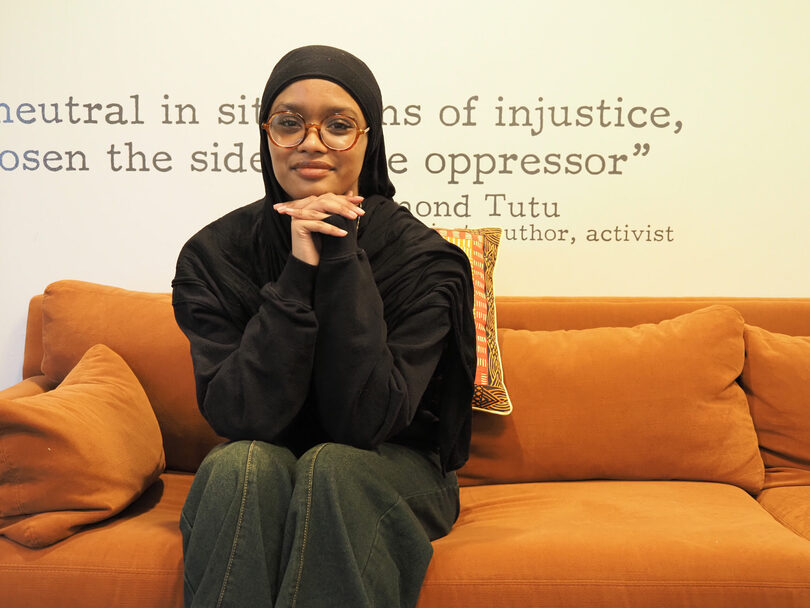Personal Essay: City of Syracuse can’t be treated as an accessory by SU

The fading of symbiotic initiatives by SU fuels concern for the city’s future development. Our columnist discusses a lack of dialogue on the growing gap between campus and the surrounding community. Brycen Pace | Assistant Photo Editor
Get the latest Syracuse news delivered right to your inbox.
Subscribe to our newsletter here.
Two years ago, my first article was a call to action for students to appreciate Syracuse and recognize it as their new home while they’re getting their education here. With my last article, I hope to be more selfish in my messaging, speaking as a local resident and upcoming graduate.
An overarching goal of mine with each article is to dismantle preconceived notions through fact. An opinion only gets you so far, so if you want to do well in any academic field, a citation is important.
But when opinion and fact work together, they become even more powerful. That’s how you move people, whether it’s to rally behind a cause or simply inspire them to keep learning on their own.
A part of me is afraid that after I graduate and leave The Daily Orange behind, I won’t see many articles about the city of Syracuse or a sense of concern for the people within it. That also goes for when I leave the classroom environment.
It’s a hard pill to swallow, but from my freshman year to now, Syracuse University has shown less and less care for the city it resides in. And for that opinion, here are my facts.
During Chancellor Nancy Cantor’s term, SU had a clear and intentional goal: to critically examine and improve the relationship between campus and community life.
The university launched several initiatives to support that mission under her leadership including the Connective Corridor, the Near Westside Initiative, the relocation of The Warehouse downtown and the South Side Innovation Center.
These community-centered efforts have been deprioritized since Cantor left, replaced by an expansion strategy that increasingly treats the city as an accessory rather than a partner.
The Connective Corridor, once a promising link between the university and downtown, has lost momentum. The SSIC, meant to foster business and educational opportunities for residents, has faded into obscurity.
As leadership changed, so did the university’s commitment to these initiatives. The SSIC dropped from the institution’s priorities and, with that, a critical bridge between the campus and the community was left neglected. While the SSIC still exists, its prominence has diminished, and the university’s direct engagement in supporting Southside businesses has largely been reduced to a footnote in its history.
Inversely, the university’s footprint grows — not through meaningful collaboration, but through land acquisitions that do little to benefit the communities they encroach upon.
Rather than trying to continue to cultivate relationships with the community, the university is carving out more property and land to expand its reach, but at the cost of the city. Its most recent request was to borrow $500 million from the city to build three dorms, syracuse.com reported.
It's a hard pill to swallow, but from my freshman year to now, Syracuse University has shown less and less care for the city it resides in.Sarhia Rahim, Columnist
While none of the money comes from taxpayers, the funds are for nonprofit organizations given by the Onondaga Civic Development Corporation. SU is a nonprofit, but there are plenty in the city that advocate and work for the community.
With so many nonprofits in Syracuse that genuinely support the residents living here, and the looming possibility of funds being cut due to the current presidential administration, there’s no reason for the university to be the one acquiring this money.
Take, for example, the recent purchase of properties along the East Adams corridor, where SU has steadily expanded its real estate holdings near the city’s public housing developments. These acquisitions raise concerns about displacement, gentrification and the university’s true intentions for the land.
Instead of investing in direct partnerships that uplift city residents, the university continues to amplify spaces that cater almost exclusively to students and faculty.
Despite bringing in the First Year Seminar 101 course or keeping ties with the Community Folk Art Center, which offers after school programs to students in the Syracuse City School District, much more can be done. Previous history has shown that the university as an institution can bridge the gap between the hill and city, and has done beyond the bare minimum.
When I arrived as a freshman, there was still an expectation, at least among certain circles, that students should engage with the city beyond campus. There were conversations about community partnerships, internship programs rooted in the city’s needs and opportunities to learn from Syracuse’s history rather than just extract resources from it.
Now, those dialogues feel muted. The university markets the city when it’s convenient but rarely acknowledges the realities of those who live here year-round.
I say this not just as a student, but as a resident who’s watched SU’s priorities shift in real time. In both a physical and cultural sense, I worry about what will be left behind when I graduate as the university continues to expand into the city’s neighborhoods and each incoming class seems more disconnected from Syracuse itself.
But my intent isn’t just to critique, it’s to call for accountability.
If SU is truly committed to being a good neighbor, it must do more than build within the city — it must build with it. This means reinvesting in programs that bridge the gap between campus and community, listening to residents about the impact of its expansion and ensuring students are encouraged not to merely use the city, but to understand and appreciate it holistically.
I started my time at The D.O. writing about why students should embrace this city as their home. I end it with a hope that future students will be encouraged to build relationships with the city that SU calls home.
Sarhia Rahim is a senior policy studies major. Her column appears bi-weekly. She can be reached at slrahim@syr.edu.






